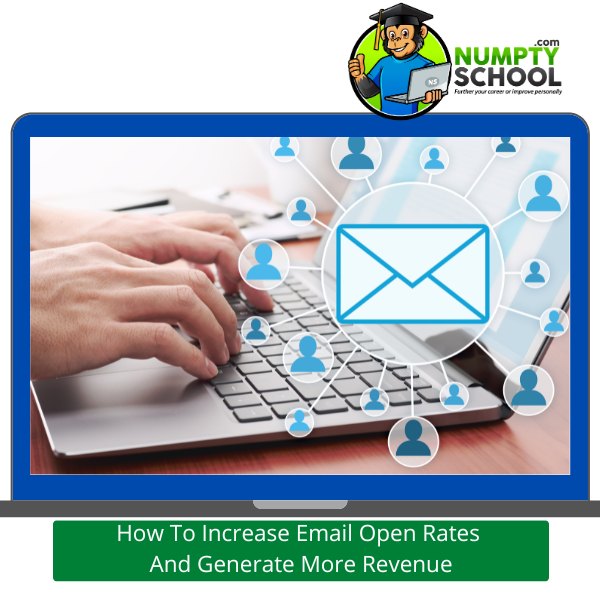How To Increase Email Open Rates And Generate More Revenue
Introduction
Email marketing has long been a cornerstone of digital marketing strategies, providing a direct and cost-effective way to reach and engage with customers. However, the success of email marketing campaigns hinges on various factors, with one of the most critical being the email open rate. This metric measures the percentage of recipients who open an email, indicating the effectiveness of your subject lines, sender information, and overall campaign strategy. In this comprehensive guide, we’ll delve deeper into the intricacies of email open rates and explore advanced strategies to increase open rates and drive revenue for your business.
Understanding Email Open Rates
Email open rate is a fundamental metric in email marketing, representing the percentage of recipients who open an email out of the total number of emails delivered. While it seems straightforward, understanding the nuances of this metric is crucial for optimizing your email campaigns. For instance, the open rate calculation relies on tracking pixel technology, which registers when an email is opened. However, it’s important to note that not all opens are accurately recorded, as some email clients may block images by default, preventing the tracking pixel from loading.
Factors Affecting Email Open Rates
Numerous factors influence email open rates, each playing a vital role in capturing the recipient’s attention and prompting them to open your email. The subject line serves as the first point of contact, making it essential to craft compelling and relevant subject lines that pique curiosity or offer value to the recipient. Additionally, the sender’s name and email address contribute to the email’s credibility and likelihood of being opened. Recipients are more inclined to open emails from familiar or trustworthy senders, highlighting the importance of establishing a recognizable sender identity.
The timing of your email plays a significant role in its open rate, as sending messages at the optimal time when recipients are most likely to engage can yield higher open rates. Factors such as time zone differences, recipient behavior patterns, and industry-specific trends should be considered when scheduling email campaigns. Furthermore, the content and design of your email impact its open rate, with visually appealing layouts and personalized content resonating more effectively with recipients.
Strategies to Increase Email Open Rates
To enhance email open rates, marketers employ various strategies aimed at optimizing different aspects of their campaigns. Crafting attention-grabbing subject lines remains paramount, with best practices including using action-oriented language, posing questions, or leveraging urgency or scarcity tactics. Personalization is another effective strategy, allowing marketers to tailor content based on recipient preferences, past interactions, or demographic information. A/B testing enables marketers to experiment with different subject lines, sender names, or email designs to identify the most effective combination for maximizing open rates.
Segmenting your email list based on factors such as demographics, purchase history, or engagement level enables targeted messaging, increasing relevance and resonating with specific audience segments. Additionally, optimizing the timing of your email sends based on recipient behavior patterns or industry benchmarks can significantly impact open rates. By analyzing metrics such as open rates, click-through rates, and conversion rates, marketers can gain valuable insights into campaign performance and make data-driven decisions to optimize future campaigns.
Utilizing Email Automation
Email automation empowers marketers to streamline their email marketing efforts and deliver personalized messages at scale. By setting up automated campaigns triggered by specific actions or events, marketers can nurture leads, re-engage inactive subscribers, and deliver timely content throughout the customer journey. Welcome emails, abandoned cart reminders, and birthday greetings are examples of automated campaigns that can drive engagement and increase open rates.
Trigger-based emails are another form of automation that responds to specific actions taken by recipients, such as website visits, email clicks, or product purchases. By delivering relevant content based on user behavior, trigger-based emails enhance the overall customer experience and increase the likelihood of engagement. Drip campaigns, consisting of a series of pre-scheduled emails delivered over time, are effective for nurturing leads and guiding subscribers through the sales funnel.
Improving Email Deliverability
Email deliverability is a critical aspect of email marketing, ensuring that your messages reach recipients’ inboxes and avoid being marked as spam. Maintaining a clean email list by regularly removing inactive or invalid addresses is essential for improving deliverability and protecting your sender reputation. Additionally, adhering to best practices such as avoiding spam triggers in subject lines, optimizing email content for readability, and including a clear call-to-action can enhance deliverability and engagement.
Authenticating your domain with SPF (Sender Policy Framework), DKIM (DomainKeys Identified Mail), and DMARC (Domain-based Message Authentication, Reporting, and Conformance) protocols helps verify the authenticity of your emails and prevents domain spoofing or phishing attacks. By establishing domain authentication, marketers can build trust with internet service providers (ISPs) and improve email deliverability rates. Regularly monitoring deliverability metrics and maintaining a positive sender reputation are essential for ensuring consistent inbox placement and maximizing the effectiveness of your email campaigns.
Monitoring and Analyzing Performance
Tracking and analyzing performance metrics is crucial for evaluating the effectiveness of your email marketing efforts and optimizing future campaigns. Key metrics such as open rates, click-through rates, conversion rates, and unsubscribe rates provide valuable insights into subscriber engagement and campaign performance. By segmenting performance data based on audience demographics, email content, or campaign objectives, marketers can identify trends, patterns, and areas for improvement.
Advanced analytics tools and email marketing platforms offer robust reporting features that enable marketers to visualize performance data, track campaign ROI, and generate actionable insights. By leveraging data-driven decision-making, marketers can refine their email marketing strategies, optimize campaign elements, and maximize the impact of their efforts. Continuous monitoring and analysis of performance metrics are essential for staying agile in a dynamic digital landscape and adapting to evolving consumer preferences and industry trends.
Case Studies and Examples
Examining real-world examples and case studies of successful email marketing campaigns provides valuable insights and inspiration for marketers. By analyzing industry leaders and innovative brands, marketers can identify best practices, emerging trends, and creative strategies for maximizing email open rates and driving revenue. Case studies showcasing effective subject lines, personalized content, and strategic segmentation offer actionable takeaways and practical guidance for optimizing email campaigns.
Best Practices for Increasing Revenue
In addition to increasing email open rates, marketers must focus on driving conversions and generating revenue through their email marketing efforts. Utilizing targeted messaging, personalized offers, and strategic calls-to-action can encourage recipients to take desired actions, such as making a purchase, signing up for a webinar, or downloading a resource. Upselling and cross-selling strategies can further maximize the lifetime value of customers and increase revenue per transaction.
Building customer loyalty through personalized communication, exclusive offers, and exceptional customer service is essential for fostering long-term relationships and generating repeat business. By delivering value-added content, nurturing leads throughout the customer journey, and providing a seamless purchasing experience, marketers can cultivate a loyal customer base and drive sustainable revenue growth. Incorporating feedback loops, customer surveys, and performance analysis into your email marketing strategy enables continuous improvement and optimization for maximum impact.
Conclusion
Increasing email open rates is a multifaceted endeavor that requires a strategic approach, ongoing optimization, and a deep understanding of your audience and market dynamics. By implementing advanced strategies such as personalization, segmentation, and automation, marketers can enhance the effectiveness of their email campaigns and drive meaningful results. By focusing on delivering value, building trust, and fostering engagement, marketers can increase email open rates and generate more revenue for their business.
FAQs
How can I improve my email open rates?
Focus on crafting compelling subject lines, personalizing your emails, and experimenting with different tactics through A/B testing.
Why is email deliverability important?
High email deliverability ensures that your messages reach your subscribers’ inboxes and are not flagged as spam, maximizing the impact of your campaigns.
What role does timing play in email marketing?
Timing can significantly impact open rates, so experiment with different send times to determine when your audience is most receptive to your messages.
How can I measure the success of my email campaigns?
Track metrics such as open rates, click-through rates, and conversion rates to evaluate the performance of your email campaigns and identify areas for improvement.
What are some common pitfalls to avoid in email marketing?
Avoid using spam triggers in your subject lines or content, neglecting to segment your audience, and sending too many emails, which can lead to subscriber fatigue and decreased engagement.




